Wex’s Paul Morgan demonstrates how to build a convenient, portable macro photography studio to use on location
Macro photography in the natural world is hugely popular, both for artistic purposes and for scientific study.
One of the best ways to shoot macro is in a studio environment with flash, which gives you the option to capture every minuscule detail. This is not without its drawbacks though. The first priority of all nature photography should be to minimise any disturbance or distress to our subjects, so digging up and cutting plants or dragging creatures from their natural ecosystem is something best avoided unless it’s very carefully managed.
The solution? Take the studio to the field. We have recently explored this approach at Wex, an experience we documented in a couple of videos shot this spring. Part 1 is at the top of this post, Part 2 is below.
This is a technique which has been established and refined by the photographer Niall Benvie and Clay Bolt. The website Meet Your Neighbours offers further detailed instruction, including an e-book dedicated to the subject and large galleries showing off the benefits of this technique and why it is necessary.
The idea of the technique is to place the subject against a clean, white, backlit background in order to best show its details with no distractions. This not only results in aesthetically pleasing images but also – perhaps more importantly – allows for documentation of the fine details of the subject for biological study or identification purposes.
Throughout this process we have photographed both plants and invertebrates. The former are fairly straightforward to shoot as you can take several minutes to set up your lights and your set. The typical setup and result might be something like those shown in the image below
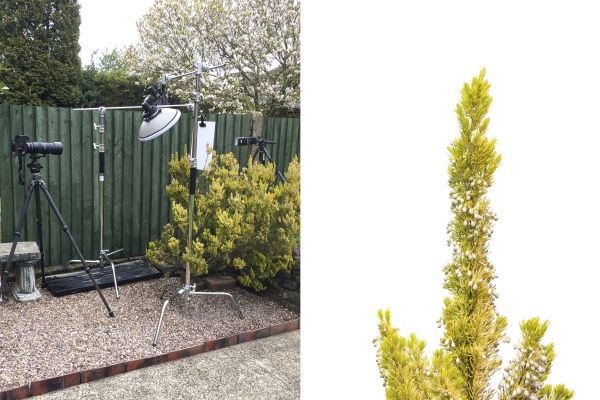
Fig. 1: A typical field studio setup and the resulting image.
Invertebrates, however, tend to be far less static, and therefore unlikely to hang about for any length of time. Macro photography requires a shallow depth of field and close focusing, meaning we need some form of containment to keep the subject still, something that will not show in the image nor cause harm to the specimen.
I recently built a field studio set for this very purpose, so wanted to share here my method as one option for how to build one. This whole unit has been designed so that it can be assembled and disassembled quickly and easily out on a shoot – useful both for ease of transportation and for cleaning (something you’ll likely appreciate if you have a subject that likes to leave slime trails or other deposits in its wake!). This design is not the most lightweight option possible, you would save weight using lightweight metal tubing or even plastic but it is designed to be cheap and simple to build.
The materials don’t have to be particularly expensive and should be relatively easy to obtain. First, a quick sneak peek at the before and after to give you an idea of what we’ll be putting together.
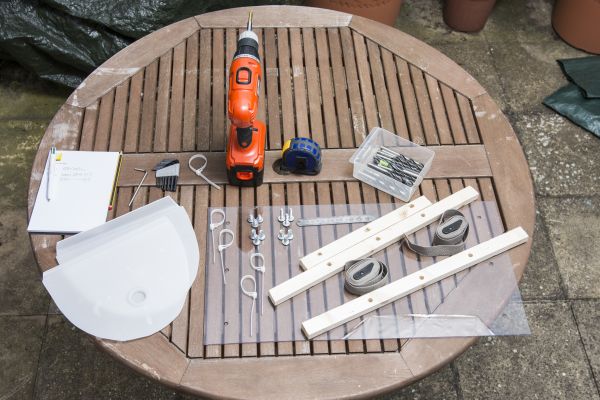
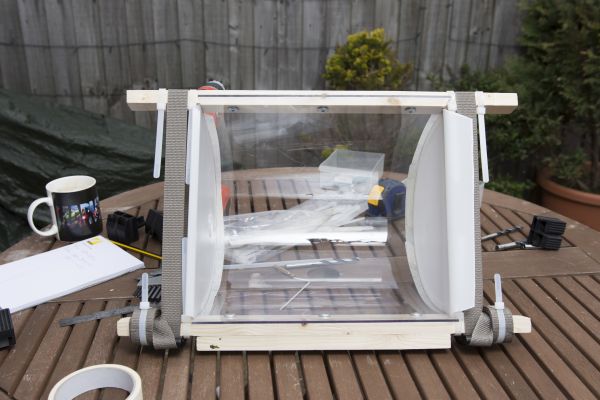
Fig. 2: Field studio set components, and finished article
Here is the list of required materials, shown above. You will need:
- 1 x piece of clear flexible polycarbonate, cut to around 600 x 300mm. This can be obtained readily and cut to size by most plastics suppliers, or purchased ready-cut online. I used 3mm polycarbonate, but on reflection I think 2mm would have been lighter for transporting and easier to bend, so would use this in the future. This material is very clear – as you’ll be lighting from behind and above, you shouldn’t see reflections from your lights in the image. It is also very non-reactive and often UV coated so is very unlikely to cause harm to the subject, and should prevent excessive UV exposure (I always recommend positioning the set in the shade anyway to prevent overheating the subject.)
- 2 x battens of wood, approximately 500mm long, and thick enough to take the tension in the curved polycarbonate. Mine were 28 x 16mm, but with thinner polycarbonate you could probably get away with slightly smaller pieces.
- A third batten, ideally trimmed a bit shorter to save on weight. I cut mine to 300mm so that the three bolts holding the main batten to the polycarbonate would also go through this piece. This serves as the handle, as I designed mine to be mounted to a super clamp and then to a tripod.
- 6 x bolts with corresponding nuts, to hold the polycarbonate to the wood. For neatness and to avoid pointy protrusions that could get in the way when using the set out in the field, I chose to use some barrel bolts I had available. These are ideal if you can get hold of them, as there is less to snag on and less play in the mounting because the bolts are contained. (See fig 3)
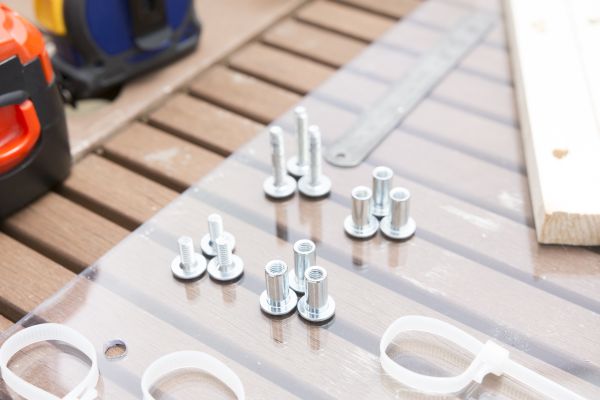
Fig. 3: Bolts and barrels. Note the longer set of bolts for the side that will have two battens.
- 2 x lengths of strong rope, cord or strapping at least 600mm long. I used some inexpensive strap belts, but you could simply tie cord to the appropriate length or use suitable sized bungee cords, although be aware these may stretch over time or become accidentally unhooked and ping you at an inopportune moment!
- A whole load of cable ties – the reusable ones are ideal as they can be repositioned, and their protruding tabs form a handy structural aid, both for your cord/strap tensioner and for the end stops of the set.
- 1 x piece of translucent lightweight flexible plastic to make end stops. I suggest translucent material as this allows you to actually use the end stop as a diffuser if you want to light your subject from the side. I used the lid to a plastic toy box from a certain well-known Swedish furniture store which cost me a few pounds. It’s ideal as it has a lip, which allows it to nestle into the cable ties when slid in place. This has to be at least 300 x 600mm to enable you to get two ends from the same piece. Important: DO NOT cut these out until you have assembled most of your set as you will use the curve of the polycarbonate to get the shape.
- Some masking tape or gaffer tape (not shown above). I prefer masking tape as it is lightweight and easy to remove without leaving sticky residue, meaning that if you have to dismantle the set to clean it, you can then easily rebuild it in a few seconds.
As with all building jobs, make sure you are wearing suitable protective clothing and eyewear before you start. The construction process itself is quite simple – I started by drilling three holes along each of the short sides of the polycarbonate. Most manufacturers recommend leaving at least 40mm from the edge before drilling so this is the reason for the overhang in my design.
When drilling into polycarbonate, keep the protective plastic on to avoid scratching the surface, and place a waste piece of wood or board underneath to support the underside and stop it cracking. Make sure you drill using a high-speed bit and apply firm but gentle pressure to get a nice clean hole. I had a larger sheet cut down to size by a local plastic supplier and so had the offcut to practice with, which was very handy (see Fig. 4 below).
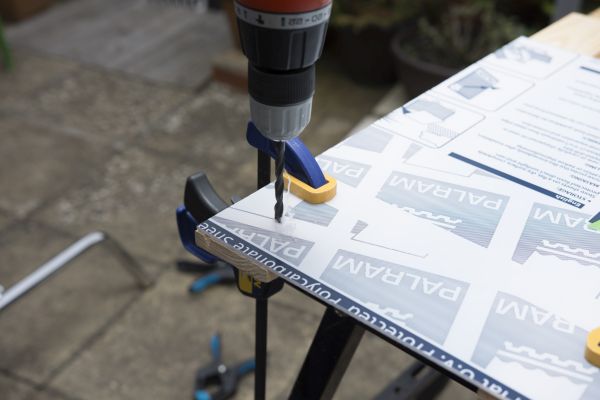
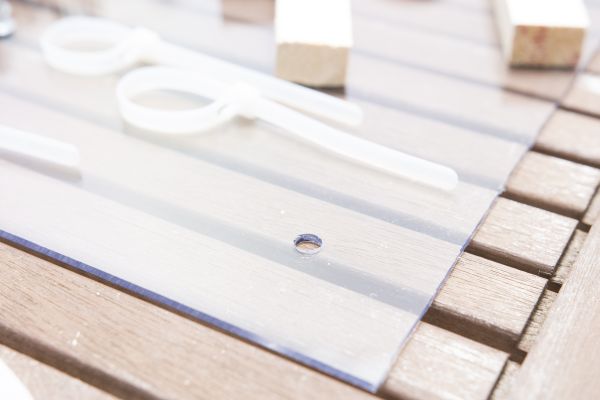
Fig. 4: Drilling the polycarbonate.
Next, you need to drill three corresponding holes in the battens, so measure and mark the centre position on the wood and then, using the holes in the polycarbonate as a template, mark the drilling points in the wood.
It is essential to ensure that the battens are square and true to the plastic sheet at this point, to ensure that when the set is curved the sides are level with one another. Drill your holes, then carefully attach all three battens to the plastic using your bolts. Make sure both battens are on the same side of the sheet, when you curve it they need to be on the outside to take the stress and properly support the polycarbonate.
Be careful not to over-tighten these bolts; make them just tight enough that they won’t work loose. If you over-tighten, you run the risk of crushing the polycarbonate which may cause it to crack when bent. You could use rubber or fabric washers between the bolts and the plastic if you wanted to be extra cautious.
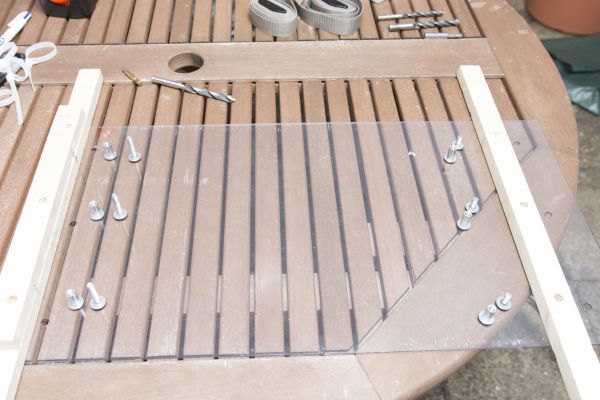
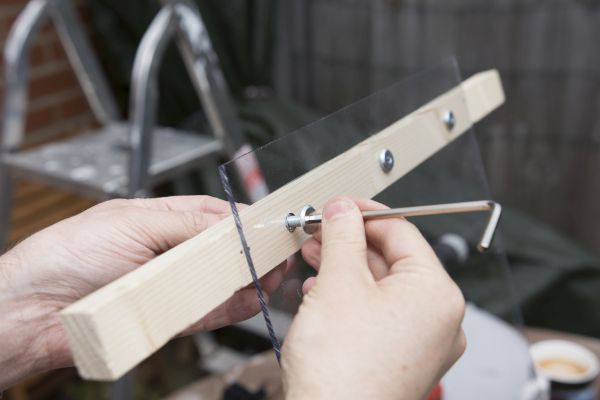
Fig. 5: Attaching the battens.
Place the set on a flat, smooth surface with the battens on the underside, with one of the battens near to you and the other farthest from you, and loop your tensioning cords or straps around the other farther batten ends.
Gently bend the far end of the plastic toward you so that the battens are on the outside of the curve and you are seeing the concave face – summon your courage at this point! Polycarbonate is very strong and flexible and shouldn’t break, but just in case it does, you want the tense curved surface pointing away from you until you are confident it will hold. As you do this, make sure the outside surface doesn’t get scratched; I laid a clean cloth on the table. Although many types of polycarbonate are resistant to scratching it is worth being cautious, so I also left the manufacturer’s protective sheet on the polycarbonate until I had finished construction. I then removed it afterwards by removing the bolts, peeling it off and reassembling.
When the two short sides of the polycarbonate are around 300mm apart you’ll have your finished curve, so either tie off the cords or tighten your straps at this point (a second pair of hands is extremely useful at this point – it’s possible but fiddly to do it on your own, and if you accidentally let go of the set, you risk damaging it).
Once the straps are on, you can use the cable ties to tie up the loose ends and hold them in place on the battens. Make sure you leave a small gap between the edge of the polycarbonate and the inner cable strap for your end stops to fit (see Fig. 6).
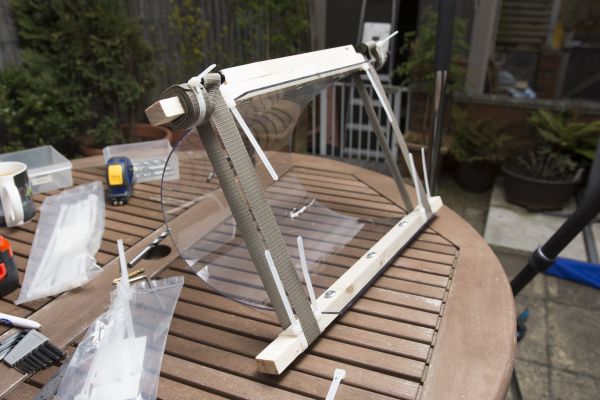
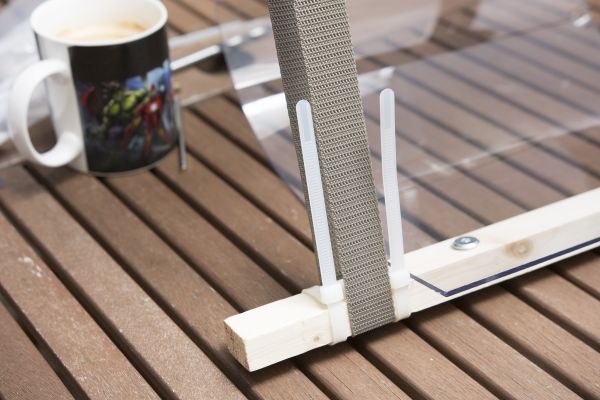
Fig. 6: Cable ties
Now you have the curve, lay down the curved polycarbonate edge of the set on a sheet of paper or card and trace the outer curve – this will give you the shape of your endstops. These should be virtually identical to one another, which will tell you if you have drilled your holes and attached your battens squarely.
If they are out by a few millimetres it shouldn’t cause a major problem, but significant differences would mean that the polycarbonate is being twisted. This may cause one edge to stress more than the other and could make the material more likely to fail and crack, so it is probably worth checking this now.
When you trace the shape of the curve onto your translucent material you will get a D-shape – make sure you leave a little extra height on the straight edge (imagine a deeper, wider D-shape), so that this straight edge can sit just above the battens and outside the set. If you cut it too short, the sides won’t reach the straps and will fall over! I also found that cutting the D longer allowed me to cut the initial curve a bit outside the lines and then trim it down to get the perfect fit. All it took was some trial and error and a little bit of whittling.
This then slides in between the polycarbonate and the cable ties, and is held to the set using masking tape (see Fig 7.)
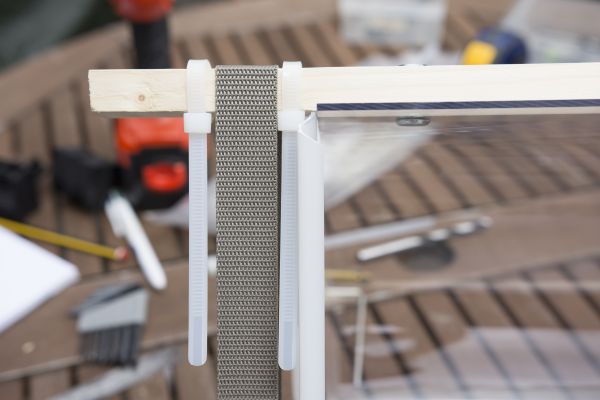
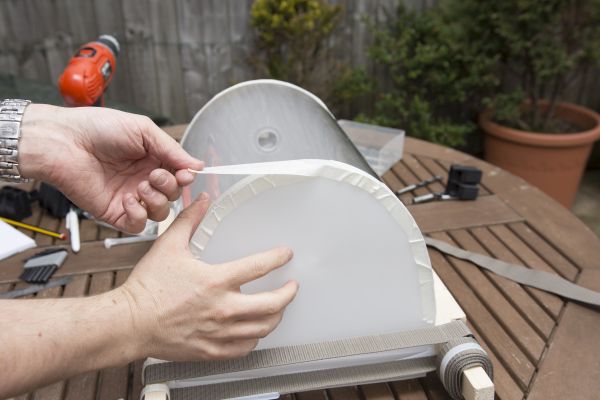
Fig.7: Attaching the end stops
We now have our completed set ready to use. I use a super clamp attached via a small Manfrotto 066 double hex stud to a tripod quick release plate, which allows for a very strong and fairly stable connection. If you have a tripod with a horizontal centre column this is ideal for getting the set away from the legs so you can get your light in behind it; just make sure you counterweight the arm or secure the legs down so it doesn’t tip! (See Fig. 8).
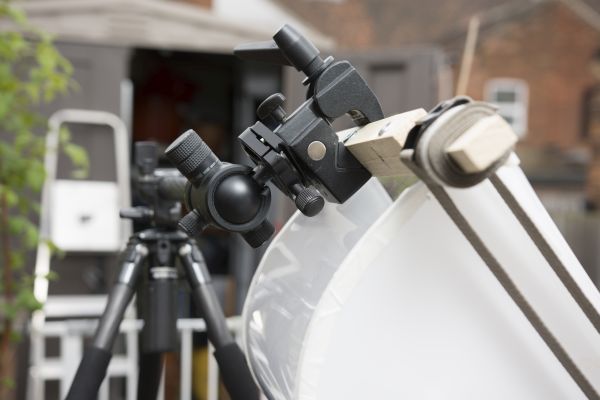
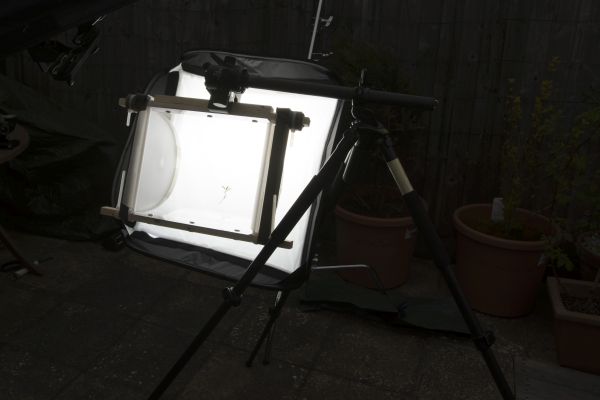
Fig.8: Set mounted to a tripod, and lit from behind with test subject.
So there we have a relatively simple afternoon’s work which enables you to explore macro studio out on location with minimal impact to the ecosystem.
The simplest way to backlight the set is using a softbox on a low stand or on a tripod that can get nice and low. You can use it facing forward, as in Fig. 8, for taking profile shots, or facing up for creatures more likely to made quick escape.
Please remember too that the whole aim of this approach is to enable you to take images with minimal disruption to the environment and your subject. Always make sure that you set up your lights and your set in advance of searching for subjects, preferably in the shade, and don't keep creatures for more than a few minutes at a time.
If you have no experience handling wild creatures it is vital to follow common sense and guidance from the countryside code and from nature charities before you begin.
You can find invertebrates by turning over logs and stones, but take great care not to destroy the environment while searching for them – careful use of jam jars and a small soft paintbrush or butterfly net are good ways to minimise this. If a creature shows any signs of distress, return it to its habitat as soon as possible and pick a different subject.
Below, I have included a few samples of the types of images you can achieve with this set, including the little plant test subject you can see in Fig. 8 above! Of course you are not limited to just nature subjects; many small product images can be taken using this set, so it can be a useful tool for general macro photography within the studio too. Please also check out our full videos at the top of this post for more information on using this kit in the field.
For more in depth information including further advice on using the equipment check out Niall Benvie’s e-book which is where I first discovered the technique, and the Meet Your Neighbours community.
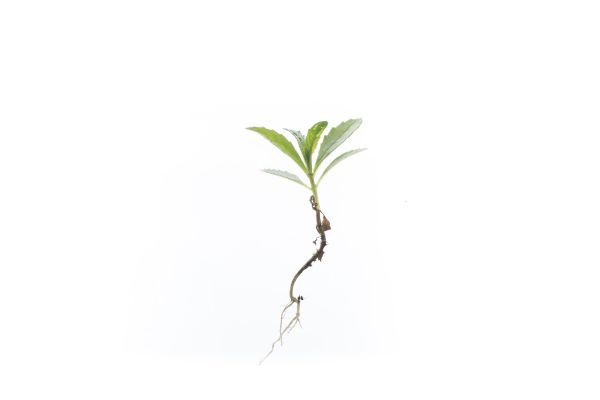
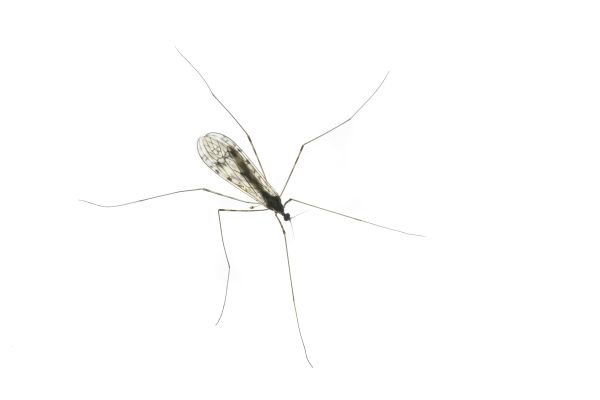
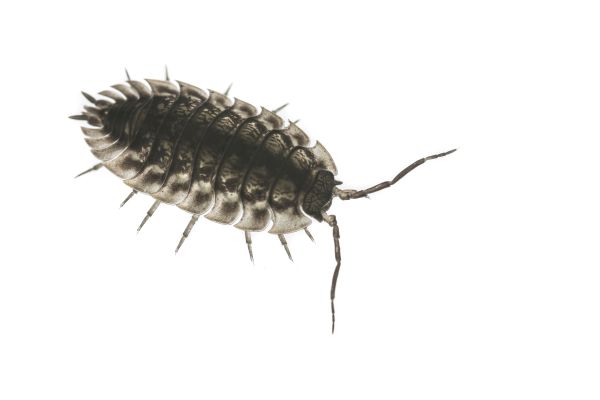
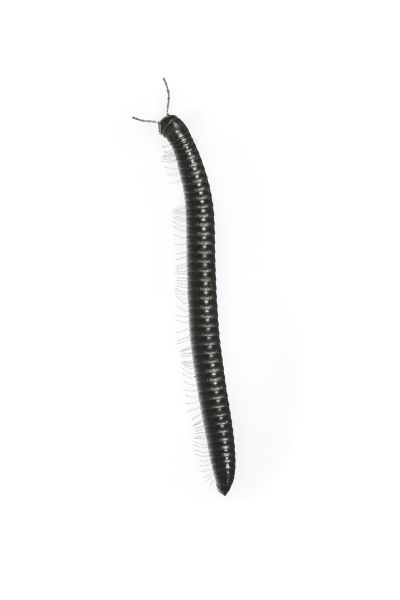
Related articles
11 Marvellous Macro Photography Accessories
Macro Lighting Secrets – Blending Ambient and Add-in Light
Behind the Image: Zebra Jumping Spider, by Matt Doogue

